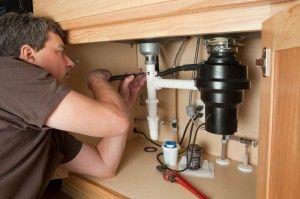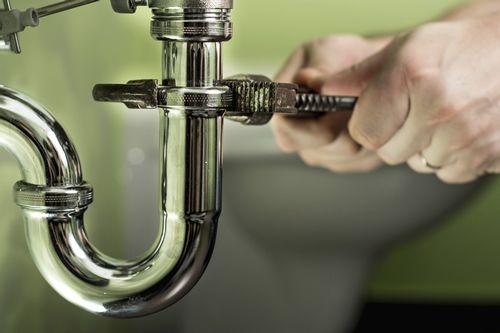
Facing the Facts: Drain Cleaning
It seems excessive, but professional drain cleaning needs to be performed by a licensed plumber if, after a few attempts, you cannot clear the drain yourself.
Persistently slow drains could be indicative of several things that, if not addressed, could exacerbate the issue.
A mainline break or clog is the most common cause of slow or backed up drains. And because of its location underground and outside of the house, most homeowners do not have the knowledge or equipment to safely fix it.
For drains to work properly, a set of moderately complex systems need to work together. That’s why having a pro diagnose serious drain clogs ensures that the problem is truly solved, not just relocated.
Two Types of Drain Cleaning
- Main Line or Primary Drains – This is the line that runs from the building to the city sewer system. Cleaning these lines usually requires specialized equipment called hydro jetters or sewer jetters. Using video line cameras to located buildup and blockages, plumbers clean the inside walls of the pipes using high-pressure water.
- Standard or Secondary Drains – These are the drains inside the building that run from sinks, dishwashers, washing machines, and showers.
The Downsides to DIY Drain Cleaning
A quick online search will give you loads of DIY drain cleaning results – from hot water, vinegar, and baking soda to auguring, snaking, and plunging. However, some methods we’ve stumbled across online can actually hurt your system. Namely, chemical drain cleaners.
Be Careful with Chemical Cleaners
Caustic, acid-based, and oxidizing drain cleaners like Dran-o and others are largely frowned-upon by plumbers.
If used at all, it’s best to make sure your pipes are not old, metal, plastic, or contain a serious blockage.
So if you’re having trouble with consistent drainage problems, call a plumber. Drain cleaning is one of the cheapest services you can request, and a good plumber will likely let you know if anything else needs attention while they’re at it.
Organic Options
If you must purchase a drain cleaner, look for one that contains enzymes that actually break down organic material.
It may take a day or so for the clog to disappear, but here’s why biological or non-toxic types work better: chemical-based drain cleaners heat up the material and simply cause it to break up and move down the line.
While offering a temporary solution, this can lead to more clog issues in areas that are far more difficult to reach, like several feet down your main sewer line.

P-Traps and Vents
It’s not something most homeowners think about, but there are actually traps built into sink and toilet drains that prevent gases from rising back up into the house. If they malfunction, your indoor air quality can get very unpleasant very quickly.
The visible curved pipe just below sinks and toilet bowls isn’t a clever way to fit more pipe into a small space. Nor is it a cruel trick descended from plumbing system innovators who plotted to make clog removal more difficult. It’s actually a design that causes water to sit between the outgoing pipe and the drain.
The water itself is technically the “trap” or seal that stops air/gas from migrating back up through the drain. The trap works with a nearby vent – a pipe that extends vertically up through the roof of the building. The vent releases enough pressure to allow water to sit in the p-trap and continue doing its job.
